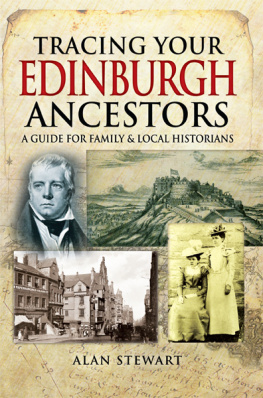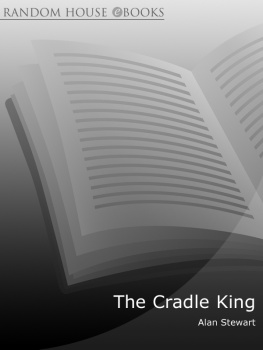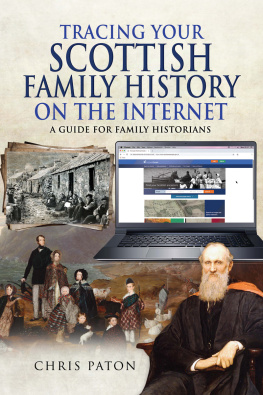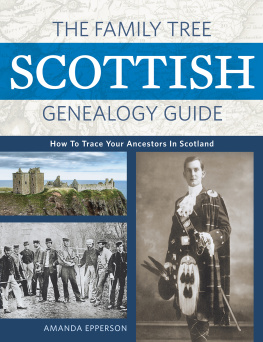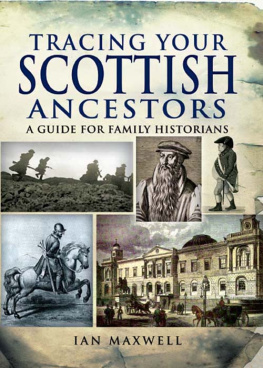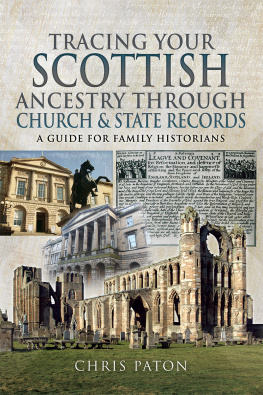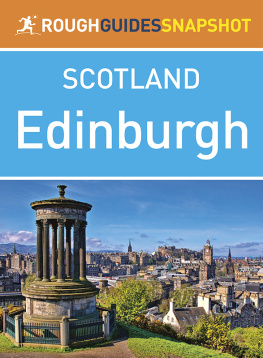FAMILY HISTORY FROM PEN & SWORD
Tracing Your Army Ancestors
Simon Fowler
Tracing Your Pauper Ancestors
Robert Burlison
Tracing Your Yorkshire Ancestors
Rachel Bellerby
Tracing Your Air Force Ancestors
Phil Tomaselli
Tracing Your Northern Ancestors
Keith Gregson
Tracing Your Black Country Ancestors
Michael Pearson
Tracing Your Textile Ancestors
Vivien Teasdale
Tracing Your Railway Ancestors
Di Drummond
Tracing Secret Service Ancestors
Phil Tomaselli
Tracing Your Police Ancestors
Stephen Wade
Tracing Your Royal Marine Ancestors
Richard Brooks and Matthew Little
Tracing Your Jewish Ancestors
Rosemary Wenzerul
Tracing Your East Anglian Ancestors
Gill Blanchard
Tracing Your Ancestors
Simon Fowler
Tracing Your Liverpool Ancestors
Mike Royden
Tracing Your Scottish Ancestors
Ian Maxwell
Tracing British Battalions on the Somme
Ray Westlake
Tracing Your Criminal Ancestors
Stephen Wade
Tracing Your Labour Movement Ancestors
Mark Crail
Tracing Your London Ancestors
Jonathan Oates
Tracing Your Shipbuilding Ancestors
Anthony Burton
Tracing Your Northern Irish Ancestors
Ian Maxwell
Tracing Your Service Women Ancestors
Mary Ingham
Tracing Your East End Ancestors
Jane Cox
Tracing the Rifle Volunteers
Ray Westlake
Tracing Your Legal Ancestors
Stephen Wade
Tracing Your Canal Ancestors
Sue Wilkes
Tracing Your Rural Ancestors
Jonathan Brown
Tracing Your House History
Gill Blanchard
Tracing Your Tank Ancestors
Janice Tait and David Fletcher
Tracing Your Family History on the Internet
Chris Paton
Tracing Your Medical Ancestors
Michelle Higgs
Tracing Your Second World War Ancestors
Phil Tomaselli
Tracing Your Channel Islands Ancestors
Marie-Louise Backhurst
Tracing Great War Ancestors DVD
Pen & Sword Digital & Battlefield History TV Ltd
Tracing Your Prisoner of War
Ancestors: The First World War
Sarah Paterson
Tracing Your British Indian Ancestors
Emma Jolly
Tracing Your Naval Ancestors
Simon Fowler
Tracing Your Huguenot Ancestors
Kathy Chater
Tracing Your Servant Ancestors
Michelle Higgs
Tracing Your Ancestors from 1066 to 1837
Jonathan Oates
Tracing Your Merchant Navy Ancestors
Simon Wills
Tracing Your Lancashire Ancestors
Sue Wilkes
Tracing Your Ancestors through Death Records
Celia Heritage
Tracing Your West Country Ancestors
Kirsty Gray
Tracing Your First World War Ancestors
Simon Fowler
Tracing Your Army Ancestors 2nd Edition
Simon Fowler
Tracing Your Irish Family History on the Internet
Chris Paton
Tracing Your Aristocratic Ancestors
Anthony Adolph
Tracing Your Ancestors from 1066 to 1837
Jonathan Oates
First published in Great Britain in 2015
PEN & SWORD FAMILY HISTORY
an imprint of
Pen & Sword Books Ltd
47 Church Street,
Barnsley
South Yorkshire,
S70 2AS
Copyright Alan Stewart, 2015
ISBN: 978 1 47382 857 5
PDF ISBN: 978 1 47387 935 5
EPUB ISBN: 978 1 47387 934 8
PRC ISBN: 978 1 47387 933 1
The right of Alan Stewart to be identified as Author of the Work has been asserted by him in accordance with the Copyright, Designs and Patents Act 1988.
A CIP catalogue record for this book is
available from the British Library.
All rights reserved. No part of this book may be reproduced or transmitted in any form or by any means, electronic or mechanical including photocopying, recording or by any information storage and retrieval system, without permission from the Publisher in writing.
Typeset in Palatino and Optima by CHIC GRAPHICS
Printed and bound in England by
CPI Group (UK), Croydon, CR0 4YY
Pen & Sword Books Ltd incorporates the imprints of Pen & Sword Archaeology, Atlas, Aviation, Battleground, Discovery, Family History, History, Maritime, Military, Naval, Politics, Railways, Select, Social History, Transport, True Crime, Claymore Press, Frontline Books, Leo Cooper, Praetorian Press, Remember When, Seaforth Publishing and Wharncliffe.
For a complete list of Pen & Sword titles please contact
PEN & SWORD BOOKS LTD
47 Church Street, Barnsley, South Yorkshire, S70 2AS, England
E-mail:
Website: www.pen-and-sword.co.uk
CONTENTS
ACKNOWLEDGEMENTS
I am grateful to Rupert Harding for giving me the opportunity to write a book about my home town, and to Jen Newby for helping me with stylistic improvements.
I also express my gratitude to the Registrar General for Scotland for his kind permission to use images of statutory birth, marriage and death records; parish register baptism, marriage and burial records; and a census return.
National Records of Scotland kindly allowed me to use images of crown copyright records, including a valuation roll, testament dative, inventory, female servant tax record and window tax record.
My thanks are also due to the Statistical Accounts Online Service of the Universities of Glasgow and Edinburgh for permission to use the Midlothian parish map.
For the use of photographs available through Wikimedia under Creative Commons Attribution-Share Alike 3.0 Unported licences, I thank Kim Traynor and Martyn Gorman.
INTRODUCTION
A brief history of Edinburgh
Edinburgh has been the capital of Scotland for about 600 years. Following the murder of King James I of Scotland in Perth on 20 February 1437, the Scottish court moved to Edinburgh Castle, which was considered to be much safer than the royal palace in Dunfermline, the previous capital. It was not until 1532, however, that Edinburgh officially became the Scottish capital.
Known as the Athens of the North, the city is the centre of Scottish banking, medicine, architecture, law and publishing, and the home of Scotlands National Gallery, National Library and National Museum. Edinburgh is also the location of the Queens official residence in Scotland, meeting-place of the General Assembly of the Church of Scotland, home of the internationally-renowned Edinburgh Festival and Royal Military Tattoo and, since 1999, the seat of the devolved Scottish Government.
Edinburgh Castle is situated on a lava plug from a long-extinct volcano. The area now called the Old Town grew up on the highest point of the castle rocks long tail, which was created by earth being pushed round behind the rock during the last glacial period.
Edinburgh has grown in size considerably over the years, and the present City of Edinburgh unitary authority includes the formerly separate burghs of Canongate, Calton and Portsburgh (added to the city in 1856), Portobello (1896), Leith (1920) and Queensferry (1975).
The city also covers the former parish of St Cuthberts, where the building of the New Town began in 1767; the parishes of Cramond, Corstorphine, Colinton, Liberton and Duddingston, which became part of Edinburgh in 1920; as well as the parishes of Dalmeny, Kirkliston, Ratho and Currie (to the west and south-west of Edinburgh), which were added as a result of the local government reorganisation of 1975.
Musselburgh, immediately to the east of Edinburgh, has never been under the citys authority. Formerly a burgh within Midlothian, Musselburgh became part of the East Lothian district of the new Lothian region in 1975. Following the further local government reorganisation into unitary authorities in 1996, Musselburgh remains in East Lothian.
Next page
